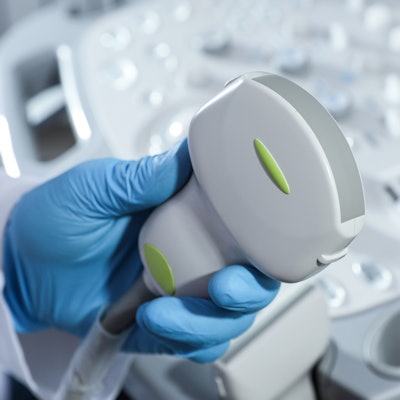
A new telediagnostic ultrasound protocol that doesn't need a trained sonographer or high-speed internet showed success in a pilot program held in Peru. The study was presented at this month's virtual American Roentgen Ray Society (ARRS) meeting.
Researchers from the University of Rochester developed a scanning protocol that could be performed by staff in the field with minimal training, with images sent over low-bandwidth connections for interpretation by experts. Imaging readers reported a high level of satisfaction with the images.
"For the majority of the world that lacks access to diagnostic imaging, this could really improve the health of the global community by giving them access," said Dr. Thomas Marini from the University of Rochester.
About two-thirds of the world doesn't have access to diagnostic imaging. While ultrasound could be deployed into rural areas, hindrances such as lack of trained sonographers, high-speed internet for teleconferencing, and healthcare infrastructure exist.
In his ARRS talk, Marini described a system designed to overcome these challenges. Here's how it works: Operators without prior ultrasound experience use a protocol the authors called volume sweep imaging to scan across preset areas of the patient's body in straight lines, with areas of interest based on external body landmarks. The operators do not interpret imaging videos or adjust an ultrasound machine.
The sweeps are captured by a portable ultrasound scanner that's connected to a tablet computer, which saves the data as video files and also records patient information. The files are then compressed to a size that can successfully travel over a low bandwidth to a cloud storage system in less than five minutes.
From there, a radiologist downloads the images and information from the cloud and can interpret them the same way they would for any other imaging study. The results are sent back to the tablet and then to the patient.
"There's minimal technical skill involved [for operators]," Marini said. "Anybody can really learn how to do this, as long as they can perform basic motions of the probe."
In his ARRS talk, Marini described how operators without prior ultrasound experience were trained for a total of nine hours on volume sweep imaging protocols. They were then sent to scan 67 study participants in Peru, and images were sent to the U.S. for interpretation.
Out of the participants, 29 underwent the right upper quadrant protocol, 22 underwent the thyroid protocol, and 16 underwent the obstetrics protocol. Blinded expert readers interpreted the volume sweep imaging acquisitions using standardized sheets detailing visualization of major structures, their confidence in estimations, and image quality.
The readers determined that features such as thyroid cysts, fetuses, and amniotic fluid were all clearly identified in the participants. In all, 96% of the scans were judged to have "acceptable" or "excellent" imaging quality.
"Many of these [images] look like they could be obtained by a sonographer," Marini said.
He said a public health study is needed to identify where this system fits into the healthcare environment. Future use of the system is possible for other protocols such as the breast and lung, he added.




















